17 Lesser-Known Florida Parks That Compete With The Caribbean—And 2 That Are Simply Unmissable

Florida is full of surprises—and no, it’s not just theme parks and crowded beaches. Tucked away from the usual tourist trails are parks so stunning, they’ll make you question whether you’re still in the U.S. or somehow wandered into the Caribbean.
Think warm breezes, water so clear you can see the sand ripple below, and wild dolphins making cameo appearances. I’ve wandered through these spots myself—snorkeled in quiet coves, hiked through mangrove tunnels, and even picnicked with manatees nearby.
So, which parks deliver that tropical escape without needing a passport? And which two absolutely have to be on your Florida travel list? Let’s uncover Florida’s best-kept secrets—where nature shows off and the crowds are blissfully missing.
1. Cayo Costa State Park: Florida’s Secret Island Paradise

Ever dreamed of having an entire beach to yourself? Cayo Costa might make that dream come true. This barrier island park is only accessible by boat, keeping crowds minimal and preserving its natural beauty.
Walking along its nine miles of unspoiled beaches, you’ll find spectacular shelling opportunities and the clearest turquoise waters outside the Caribbean. The island’s interior features pine forests and oak-palm hammocks teeming with wildlife.
Primitive cabins and campsites let adventurous souls spend the night under star-filled skies. The isolation and untouched beauty make this park feel more like a remote Caribbean island than part of Florida.
2. Caladesi Island State Park: Untouched Coastal Wilderness
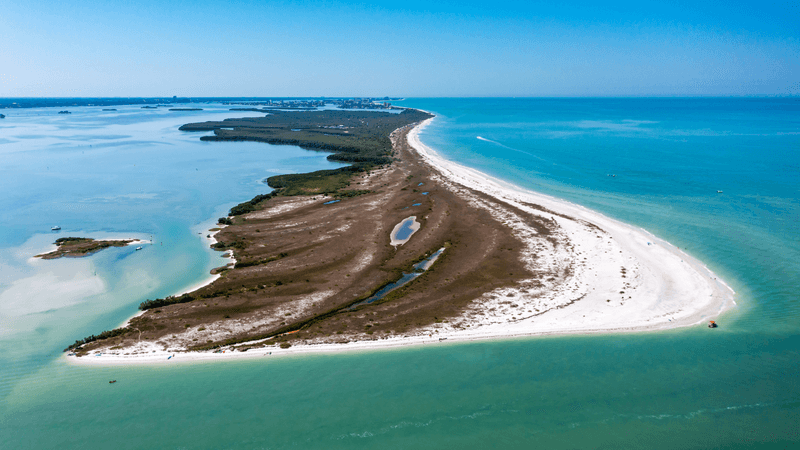
Did you know Caladesi Island remains one of the few completely natural islands along Florida’s Gulf Coast? This pristine paradise consistently ranks among America’s top beaches for good reason.
The park boasts three miles of white sandy beaches where dolphins frequently play offshore. Kayakers can explore the mangrove forests through a three-mile paddling trail, discovering hidden ecosystems few visitors ever see.
Unlike its more famous neighbor Clearwater Beach, Caladesi retains its natural character with zero high-rises or development. The ferry ride to reach this isolated gem adds to the adventure, making you feel worlds away from civilization.
3. Lovers Key State Park: Romance Meets Natural Beauty
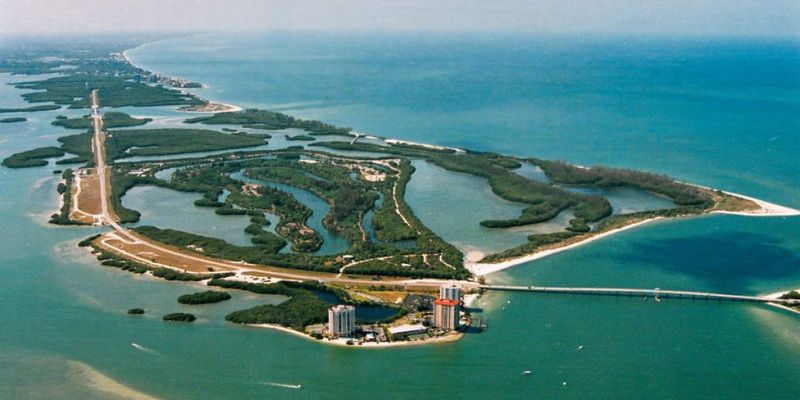
Once accessible only by boat, Lovers Key earned its romantic name as a secluded getaway for couples. Today, this former collection of barrier islands offers some of Florida’s most diverse ecosystems packed into one stunning park.
The two-mile stretch of white sand beach serves as a nesting ground for sea turtles and a premier spot for dolphin watching. Inland, manatees frequently visit the park’s estuaries while ospreys soar overhead.
Renting a bike to explore the multi-use trails reveals hidden lagoons and wildlife viewing opportunities most visitors miss. For paddlers, the calm back bays provide Caribbean-clear waters perfect for spotting rays, fish, and occasional manatees.
4. John Pennekamp Coral Reef State Park: America’s Underwater Treasure
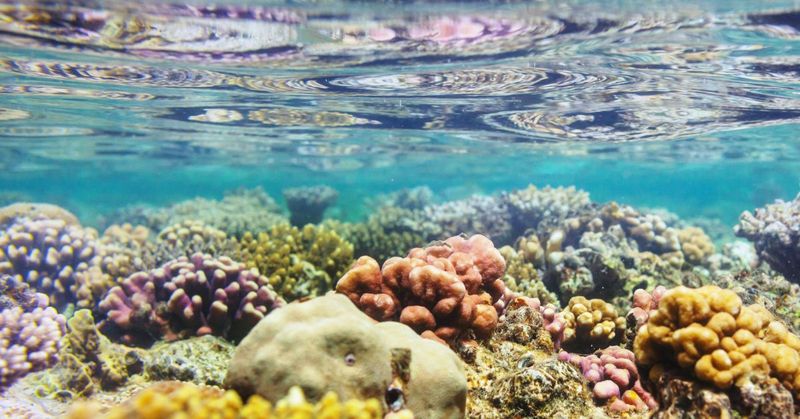
America’s first underwater park offers Caribbean-quality snorkeling and diving without leaving the country. Located in Key Largo, this marine wonderland protects part of the only living coral reef in the continental United States.
Glass-bottom boat tours reveal colorful fish and coral formations for those who prefer staying dry. The famous Christ of the Abyss statue, a 9-foot bronze Jesus with arms raised toward the surface, provides one of Florida’s most iconic underwater photo opportunities.
Mangrove swamps along the shoreline create nurseries for marine life and paddling trails for kayakers. This underwater paradise rivals anything you’d find in the Caribbean, all while being just an hour’s drive from Miami.
5. Bahia Honda State Park: The Keys’ Crown Jewel

White sand beaches in the Florida Keys are surprisingly rare, which makes Bahia Honda’s expansive shores even more special. This park consistently ranks among Florida’s most beautiful beaches with its palm-lined shores and shallow, clear waters.
The old Bahia Honda Rail Bridge, part of Henry Flagler’s overseas railroad, provides both a stunning photo backdrop and a glimpse into Florida’s history. Snorkelers flock to nearby Looe Key Reef, where tropical fish dart among coral formations in waters rivaling any Caribbean destination.
Camping here means waking up to spectacular sunrises over the Atlantic and equally impressive sunsets over the Gulf of Mexico. Few places in Florida offer both in one location.
6. Bill Baggs Cape Florida State Park: Miami’s Hidden Coastal Gem
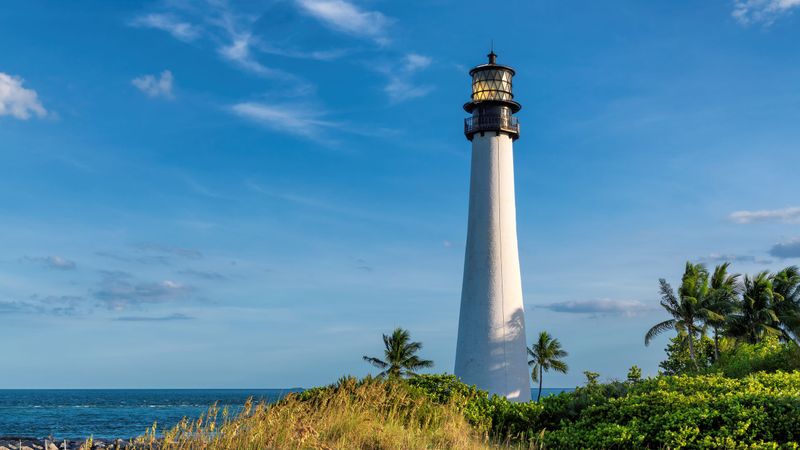
At Miami’s southern tip sits a park so beautiful it’s hard to believe you’re still in a major metropolitan area. Bill Baggs Cape Florida preserves the natural beauty of Key Biscayne with a mile of Atlantic beachfront that consistently ranks among America’s top beaches.
The historic Cape Florida Lighthouse, built in 1825, stands as the oldest structure in South Florida. Climbing its 109 steps rewards visitors with panoramic views of Biscayne Bay, the Atlantic Ocean, and Miami’s skyline.
Cycling the park’s paved paths reveals hidden mangrove forests and coastal hammocks. The calm waters on the bay side create perfect conditions for paddleboarding and kayaking with downtown Miami’s skyscrapers creating a dramatic backdrop.
7. Egmont Key State Park: Island of History and Mystery
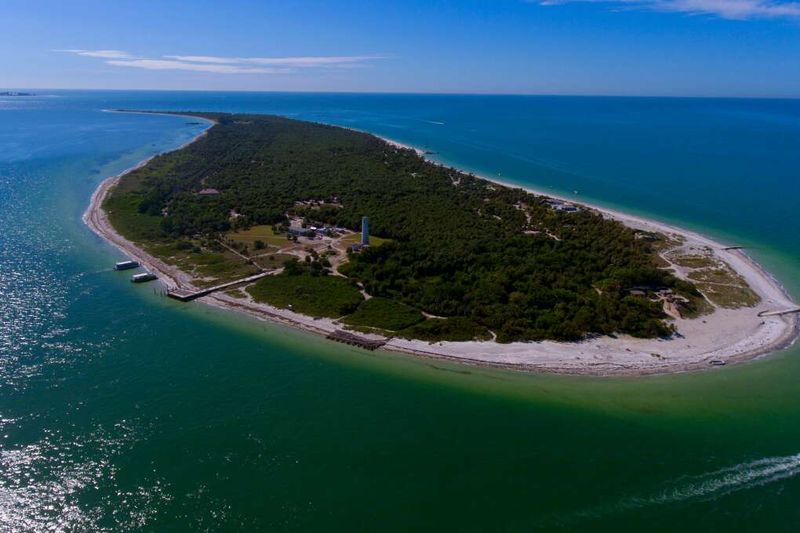
History and natural beauty merge on this remote island at the mouth of Tampa Bay. Accessible only by boat, Egmont Key’s isolation preserves both its wildlife and remnants of its military past.
Brick roads that once connected military installations now lead nowhere, disappearing into the Gulf of Mexico due to erosion. The 1858 lighthouse still stands sentinel, while gopher tortoises roam freely among ruins of Fort Dade, built during the Spanish-American War.
The western shore features pristine beaches where you’ll often see dolphins playing offshore. Snorkelers can explore underwater ruins just off the beach where parts of the fort have been claimed by the sea, creating artificial reefs teeming with marine life.
8. Fort De Soto Park: Five Islands of Adventure
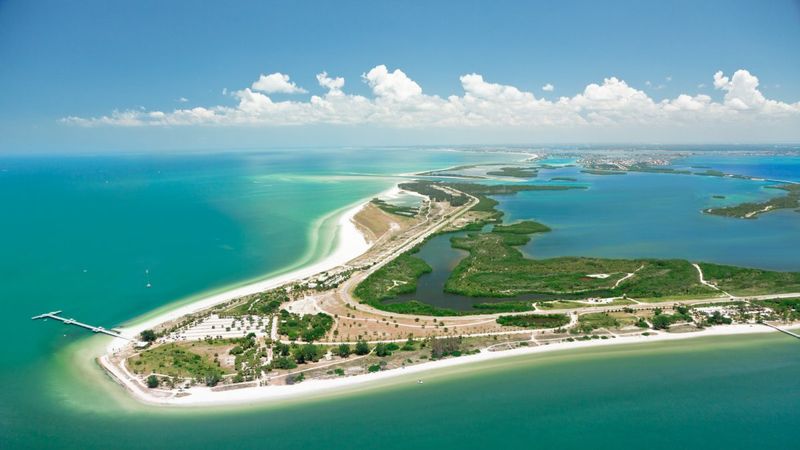
Spanning five interconnected islands, Fort De Soto Park offers more diversity than almost any other Florida park. Its North Beach consistently ranks among America’s best beaches with sugar-white sand and a shallow lagoon perfect for families.
History buffs can explore the Spanish-American War era fort with its massive artillery batteries still in place. The park’s location at the mouth of Tampa Bay creates a premier fishing destination where anglers regularly catch snook, redfish, and tarpon from the park’s piers.
Paddling trails wind through mangrove forests where you might spot roseate spoonbills and other colorful wading birds. The park’s size and variety of ecosystems mean you could visit for a week and discover something new each day.
9. St. George Island State Park: Forgotten Coast’s Finest
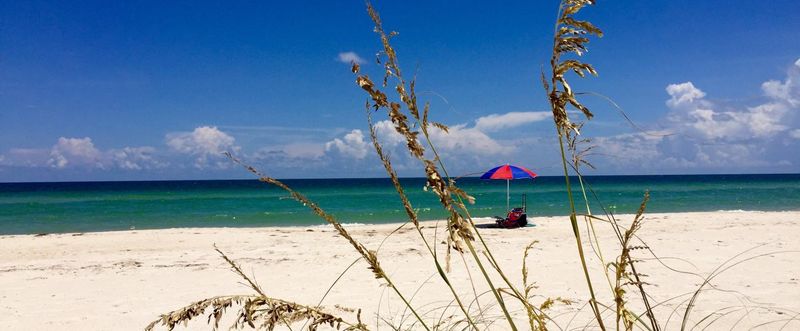
Far from Florida’s tourist hotspots, St. George Island State Park preserves nine miles of undeveloped beaches along the state’s Forgotten Coast. The park occupies the eastern end of a barrier island where development restrictions maintain a natural shoreline rarely seen in Florida today.
The striking blue-green waters rival any Caribbean destination, while the sugar-white sand squeaks beneath your feet. Birders flock here during migration seasons when the island becomes a crucial stopover for numerous species.
Stargazing reaches spectacular levels due to minimal light pollution. On clear nights, the Milky Way stretches across the sky in dazzling detail, creating memories that last long after your suntan fades.
10. Henderson Beach State Park: Emerald Coast’s Natural Sanctuary
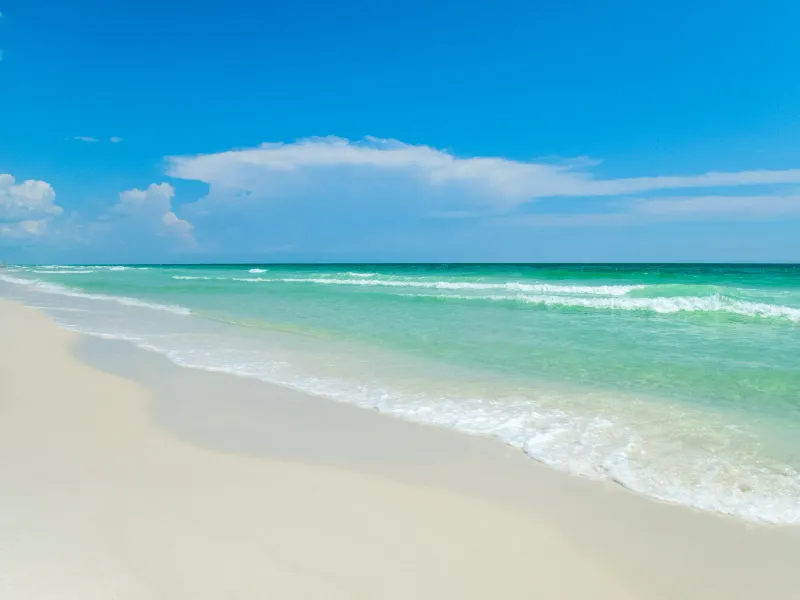
While high-rises dominate much of Destin’s coastline, Henderson Beach State Park preserves a stretch of the Emerald Coast in its natural state. The park protects over 6,000 feet of pristine shoreline and dunes rising 30 feet above the Gulf of Mexico.
These ancient dunes, rare along Florida’s heavily developed coast, support a thriving ecosystem of scrub oaks, magnolias, and dune rosemary. The emerald-green waters here aren’t just beautiful—they’re typically crystal-clear, allowing you to spot fish without even getting wet.
Morning walks often reveal intricate patterns of crab tracks and bird footprints across untouched sand. The beach’s striking white color comes from Appalachian quartz carried to the Gulf by rivers over thousands of years.
11. Grayton Beach State Park: Where Artists Meet Nature
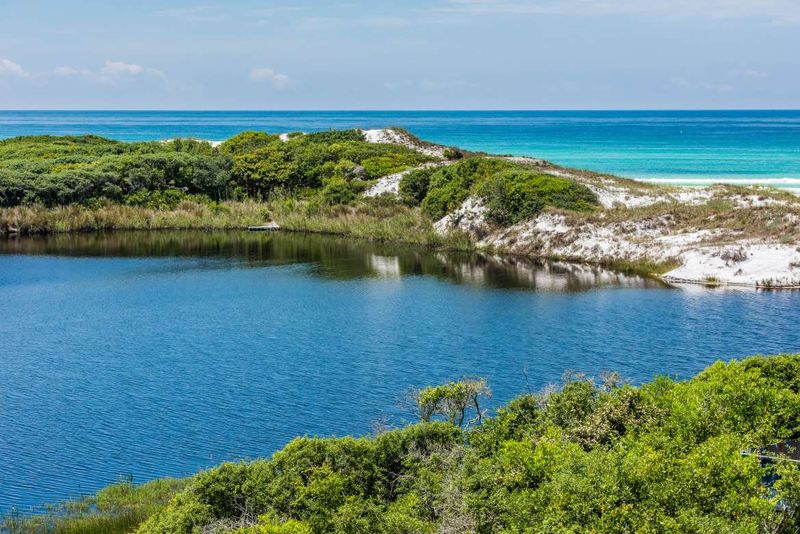
Artists and nature lovers have long been drawn to Grayton Beach State Park, where coastal dune lakes—a rare natural phenomenon found in only a few places worldwide—meet the Gulf of Mexico. These freshwater lakes occasionally connect with the Gulf, creating unique brackish ecosystems.
The beach itself features the region’s signature white quartz sand and emerald waters. A one-mile nature trail winds through a coastal forest where scrub oaks and magnolias create a canopy twisted by salt winds into sculptural shapes.
The nearby bohemian community of Grayton Beach adopted the unofficial motto “Nice Dogs, Strange People,” reflecting the area’s artistic, laid-back vibe. This combination of natural beauty and quirky culture creates an atmosphere unlike anywhere else in Florida.
12. Anastasia State Park: Ancient Dunes and Historic Quarries

Just minutes from historic St. Augustine lies a coastal paradise where ancient coquina rock formations create a landscape unlike any other Florida beach. These naturally cemented shells form the same material used to build St. Augustine’s famous fort, Castillo de San Marcos.
The park’s four miles of pristine beach feature dramatic erosion patterns in the coquina outcroppings that create natural tide pools. Bird watchers flock to the salt marshes where painted buntings, one of North America’s most colorful birds, nest seasonally.
Visitors can rent kayaks to explore Salt Run, a tidal marsh teeming with wildlife. The maritime hammock trail reveals a twisted, wind-sculpted forest that has adapted to life between ocean and mainland.
13. Big Lagoon State Park: Gateway to Florida’s Wildest Coast
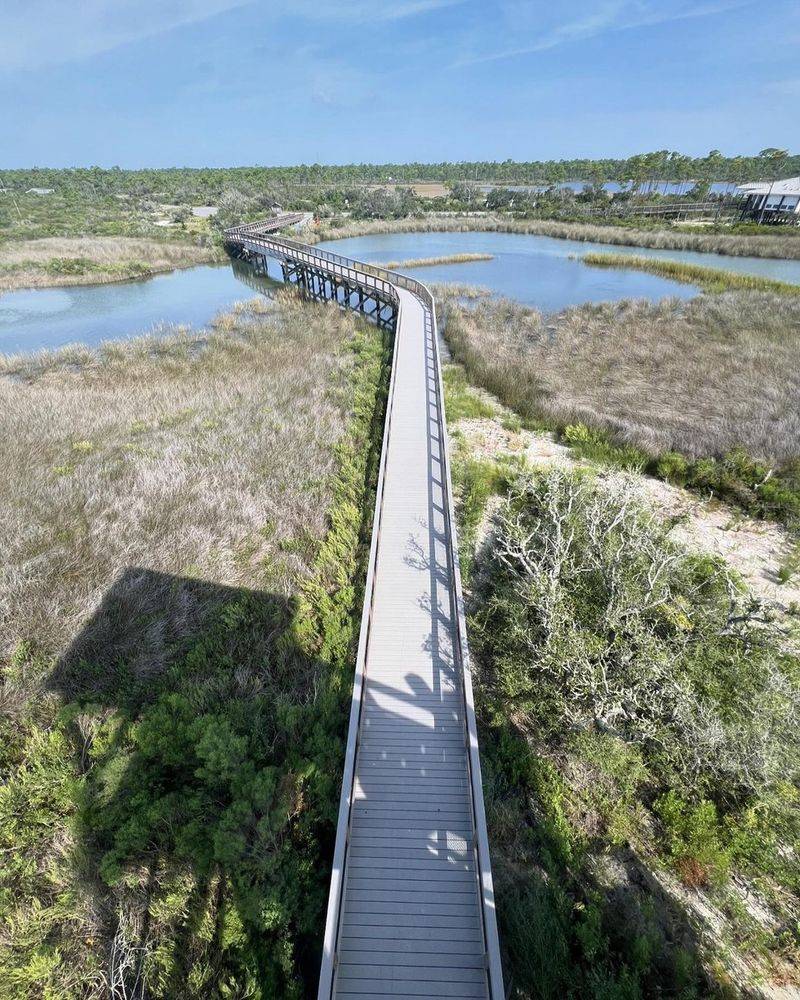
Standing atop the observation tower at Big Lagoon State Park reveals why this area serves as the gateway to Florida’s most pristine coastal wilderness. The park sits at the beginning of the 1,515-mile Florida Circumnavigational Saltwater Paddling Trail, attracting kayakers from around the world.
The shallow lagoon transitions from emerald green to deep blue as it merges with Perdido Bay. Boardwalks cross coastal marshes where alligators, herons, and other wildlife thrive in this critical ecosystem.
While not known for swimming beaches, the park’s shoreline offers something more valuable—a glimpse into Old Florida before development. Fall brings spectacular monarch butterfly migrations, with thousands stopping here during their journey to Mexico.
14. Sebastian Inlet State Park: Where Two Oceans Meet
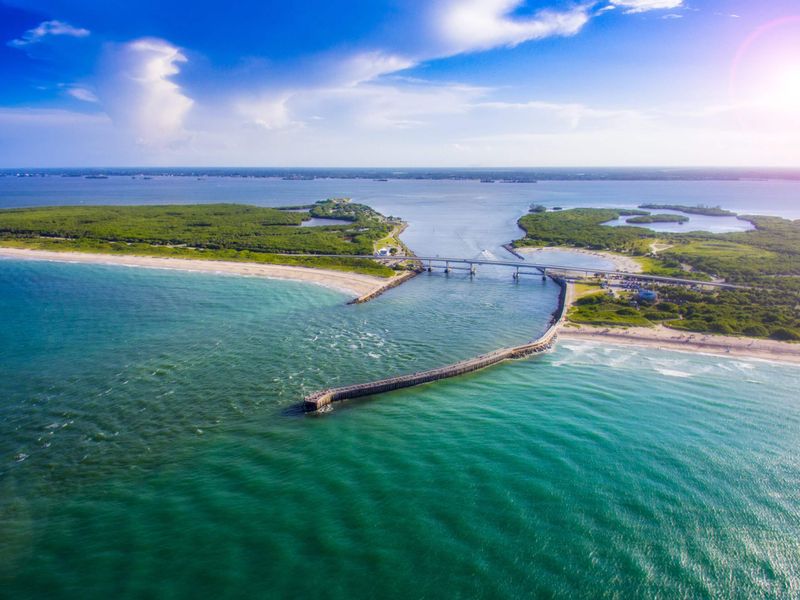
Surfers call Sebastian Inlet “First Peak” for its legendary right-breaking waves, but this park offers far more than world-class surfing. The inlet connects the Atlantic Ocean with the Indian River Lagoon, creating one of Florida’s most dynamic ecosystems.
Two fishing jetties extend into the inlet, making this one of Florida’s premier fishing spots. Spanish mackerel, snook, and redfish are common catches, while bottlenose dolphins often patrol the channel hunting for the same prey.
History buffs can explore McLarty Treasure Museum, built near the site where 11 Spanish galleons wrecked in 1715, scattering gold coins occasionally still found on nearby beaches. The park spans both sides of the inlet, offering distinct experiences on each shore.
15. Gasparilla Island State Park: Old Florida Elegance
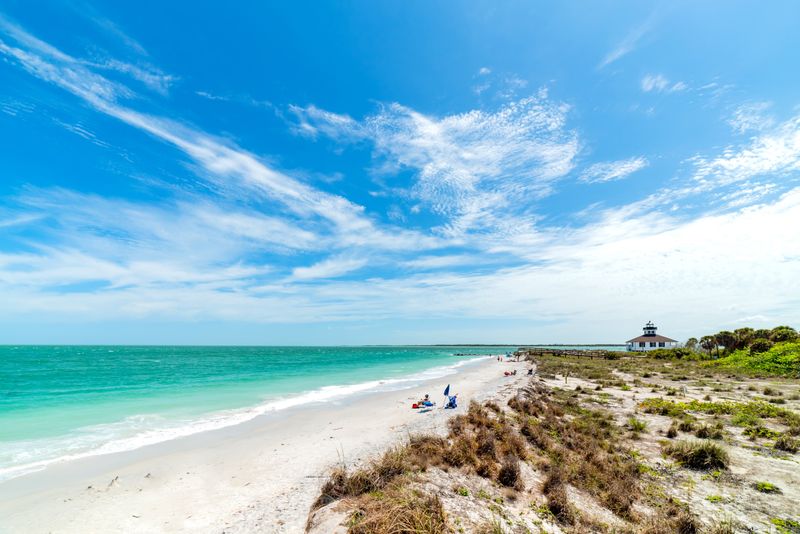
Named after the legendary pirate José Gaspar, this barrier island park preserves both natural beauty and glimpses into Florida’s gilded age. The restored Port Boca Grande Lighthouse, built in 1890, now serves as a museum showcasing the island’s fascinating history.
Beaches here feature unusual dark sand mixed with white, created by prehistoric shark tooth fossils that wash ashore regularly. Shelling rivals the more famous Sanibel Island, but with far fewer people competing for treasures.
The park borders the historic community of Boca Grande, where million-dollar homes and quaint downtown maintain an old-Florida atmosphere. This combination of natural beauty and historic charm creates a destination that feels more like a Caribbean island than part of Florida’s mainland.
16. Hugh Taylor Birch State Park: Fort Lauderdale’s Urban Oasis
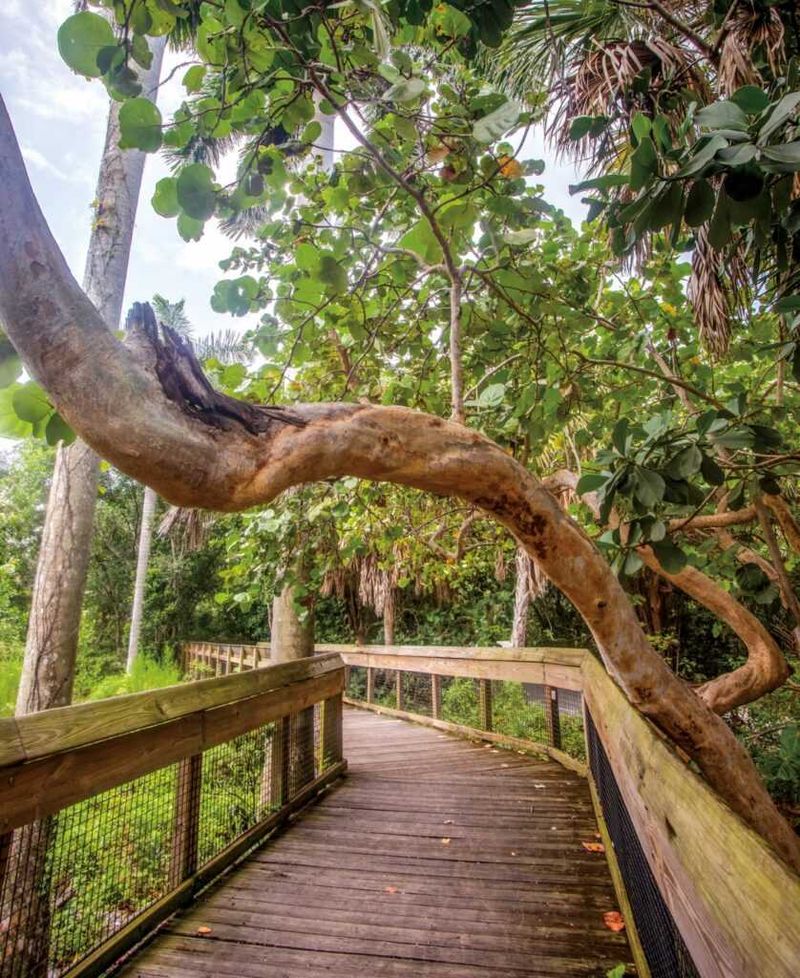
Imagine a pristine slice of old Florida surrounded by Fort Lauderdale’s urban sprawl. Hugh Taylor Birch donated his oceanfront estate to create this unexpected natural haven that locals call “Central Park on the Ocean.”
A freshwater lagoon runs through the park’s center, home to turtles, fish, and occasional manatees that find their way in from the Intracoastal Waterway. The maritime forest features massive strangler figs and gumbo limbo trees with their distinctive red peeling bark nicknamed “tourist trees” for resembling sunburned visitors.
A tunnel under A1A connects the park directly to Fort Lauderdale Beach, allowing you to experience both wilderness and world-famous beaches in one visit. Birch’s former home now serves as a restaurant with spectacular views of the lagoon.
17. Curry Hammock State Park: Middle Keys Hidden Gem

Tucked between more famous Keys destinations, Curry Hammock protects the largest undeveloped parcel of land in the Middle Keys. This often-overlooked park preserves critical habitat for endangered Key deer and countless migratory birds.
The shallow waters offshore create ideal conditions for kiteboarding and paddleboarding, with consistent breezes and crystal-clear visibility. A surprising diversity of environments exists within this small park, from mangrove forests to rockland hammocks filled with tropical hardwoods.
Campsites sit just steps from the Atlantic, offering some of Florida’s most affordable oceanfront accommodations. During fall migration, the park becomes a crucial monitoring site for peregrine falcons, with researchers counting thousands passing overhead on their journey south.
18. Dry Tortugas National Park: America’s Most Remote National Park
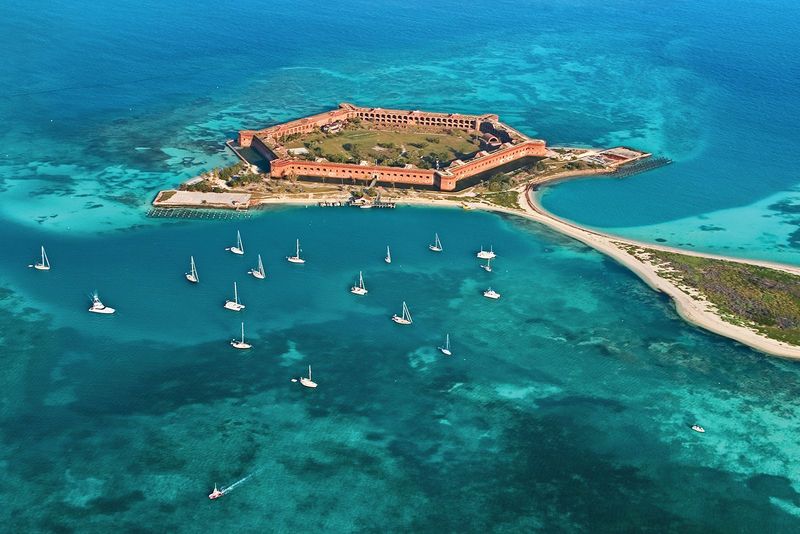
Seventy miles west of Key West lies a national park so extraordinary it had to make my unmissable list. Dry Tortugas combines history and natural beauty in ways that leave visitors speechless.
The massive Fort Jefferson, a 19th-century coastal fortress built with 16 million bricks, rises dramatically from crystal-clear waters. Surrounding the fort, coral reefs rival any in the Caribbean for snorkeling, with visibility often exceeding 100 feet and minimal crowds compared to popular international destinations.
The park’s isolation creates a bird-watching paradise, especially during migration seasons. Camping here means experiencing star-filled skies unmarred by light pollution and waking to sunrise over waters so clear you can see fish from shore.
19. Ichetucknee Springs State Park: Florida’s Crystal Clear River Experience
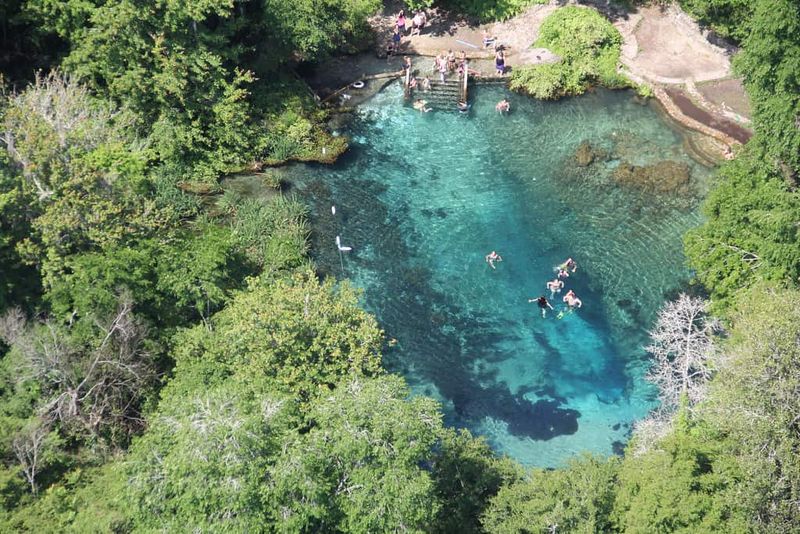
If there’s one freshwater experience in Florida that shouldn’t be missed, it’s tubing down the crystal-clear Ichetucknee River. This six-mile spring-fed river maintains a constant 72-degree temperature year-round, offering relief from summer heat and a glimpse into Florida’s underwater world.
The headspring pumps out 233 million gallons of water daily, creating a natural lazy river experience through hammocks of ancient cypress trees. Wildlife viewing opportunities abound, with turtles, fish, and occasional river otters visible through the transparent water.
Winter visits reveal a different experience, with fewer crowds and greater chances of spotting manatees seeking warm water. The park’s eight named springs each offer unique features, from the impressive Blue Hole spring to the intimate Mission Springs.
